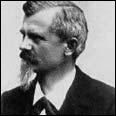|
||||||||
|
|
|||||||
|
McLaren-Mercedes combination won its first Grand Prix in Australia at the start of '97, and has since taken back to back Drivers' titles with Mika Hakkinen in '98 and '99, along with the Constructors' title in '98. In January 2000 they took a 40% shareholding in their current Formula One partner, the TAG McLaren group, having severed their Sauber relationship after just one 'official' season at the end of '94.
At every stage, the cautious nature of the Mercedes-Benz policy is evident. They spent a year observing Ilmor's capabilities, before buying an interest; They stayed in the background with Sauber's sports car programme until success looked likely; and dumped Sauber for McLaren when they realised that they were not likely to ever win in Formula One. For a company with the revenues of Mercedes-Benz, the amounts paid for the stakes in their F1 partners was little more than small change, and yet it cemented their relationships, ensuring that they will always have the status of full partners and not just sponsors. The 'partner' approach is also increasingly at odds with the strategies adopted by most of the other motor companies with an F1 programme. Ford and Renault have both bought teams; Toyota is to go at it alone, whilst BMW and Honda build their own engines in house. Yet only Ferrari could claim to have matched Mercedes-Benz in the amount of positive rub off associated with running a winning F1 effort. And Ferrari, although about to celebrate selling more than 4000 road cars for the first time, are mere minnows when compared to the over one million vehicles that were sold worldwide by Mercedes-Benz last year. Yet, for all their conservatism, Mercedes-Benz were responsible for by far the most adventurous and successful driver development programme in the history of modern motor sport. Jochen Neerpasch, who had previously set up a similar programme on behalf of BMW, signed up the three most promising young drivers in Germany, at a time when it looked likely that Mercedes-Benz would quickly extend their racing activities into Formula One. |

The Original Mercedes 

The Original Benz |
|
|
Benz decision in late '91 not to enter F1 immediately. Eventually both Frentzen and Wendlinger would drive under the Sauber-Mercedes banner, but would never race the famed Silver Arrows in Formula One. Nor would Michael Schumacher, the young kid from Kerpen, upon whom Mercedes-Benz had lavished so much time and money in '90 and '91.
Schumacher would have his path smoothed into F1 firstly with Jordan, then Benetton, by Jochen Neerpasch on behalf of Mercedes-Benz, on the basis that he could be reclaimed by the Stuttgart based team if and when they entered Formula One in their own right. This they never did, so ironically, the greatest German driver ever has never raced with his nation's most renowned automobile company. Indeed, his talent behind the wheel for Ferrari has become arguably their biggest obstacle in their quest for total domination. It would be easy to assume, then, that this driver development programme was a failure. On the contrary, however: it has reaped Mercedes-Benz a huge return, although, admittedly, not in the way they may have originally intended. The success of Michael Schumacher over this last decade has transformed the racing scene in Germany beyond recognition. F1 now rivals football as the country's most watched sport. 'Schumi' is one of the few sportsmen to have become a legend whilst he is still actively competing in his chosen sport. Acknowledged as the world's best driver, some 18 million Germans now tune in to watch him as he lines up on the grid for each race, and as they do so, they can bask in the reflected national pride each time he mounts the podium to celebrate yet another triumph. But if he is the best driver, why does he gets beaten more times than he wins? The only answer in the public's mind must be that the driver beating Michael Schumacher must have a better car, and that car is, of course, the Mercedes-powered McLaren, which has scored 23 victories over the last three years. Six more than Schumacher has won in his Ferrari over the same period. |

The Original Daimler 

The Original Maybach |
|
|
played its part in achieving these figures.
Later this year, the driving combination of Mika Hakkinen and David Coulthard will line up for an unprecedented sixth straight season in the cockpits of their McLarens. Behind the scenes, Mercedes-Benz has always been a steadying influence, supporting their drivers, even during difficult times, when it is very easy to destabilize the situation with added criticism. Coulthard, who has so often been in the shadow of his faster teammate, has especially benefited from the considerable support offered by the M-B hierarchy. On the front of every Mercedes-powered McLaren Grand Prix car of the nineties, has been the famed Three-Pointed Star, one of the most recognised corporate symbols in the world. It has adorned Mercedes-Benz racing cars throughout all their history and is synonymous with cars that win races. It is a tradition that looks set to continue. |

|
|
| Roger Horton | © 2007 autosport.com |
| Send comments to: horton@atlasf1.com | Terms & Conditions |





